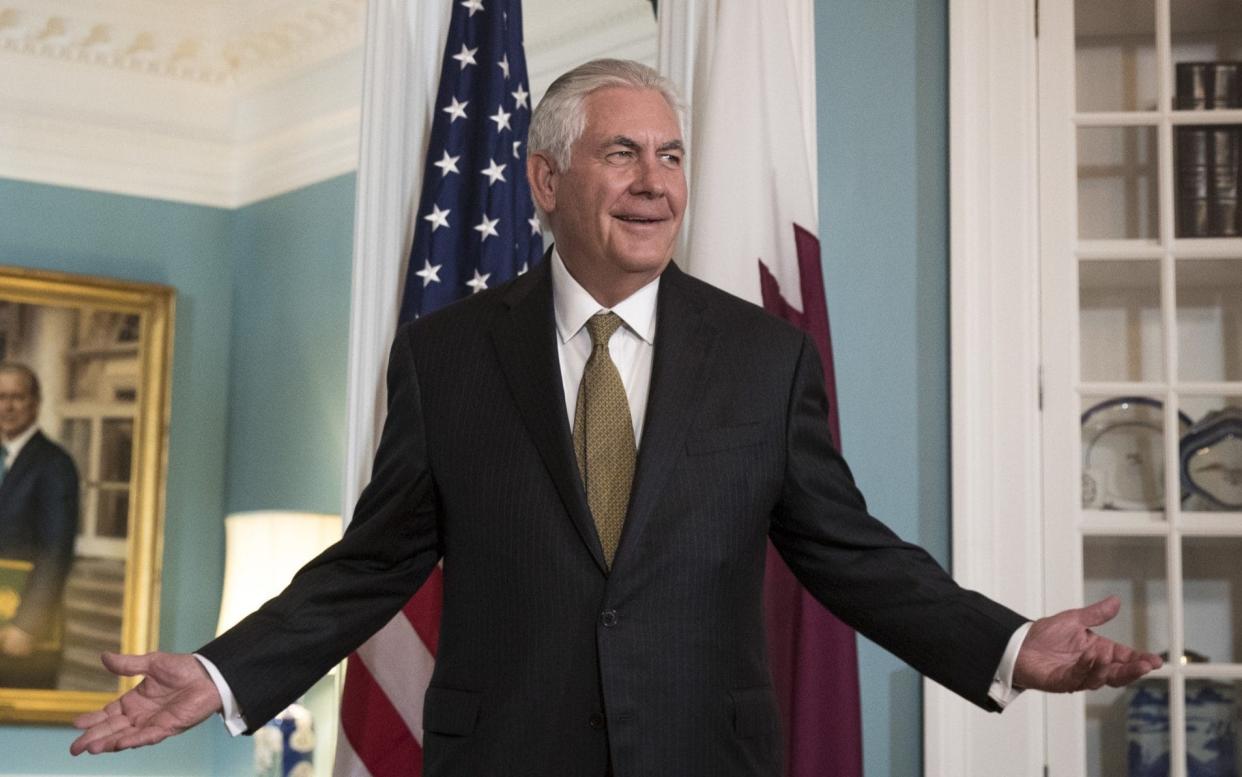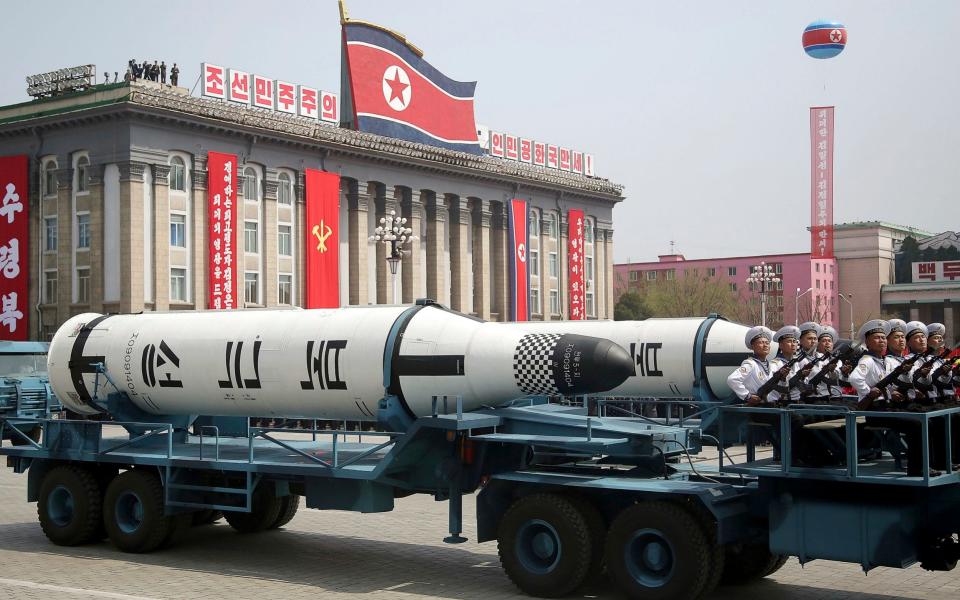Rex Tillerson says US would like to seek dialogue with North Korea and does not blame China for tensions

Rex Tillerson has said the US does not blame China for escalating tensions with North Korea and would like to seek a dialogue with Kim Jong-un's regime.
The US secretary of state's diplomatic tone directly contradicted President Donald Trump, who tweeted two days ago that he was "very disappointed" with China and accused Beijing of doing “nothing” over Pyongyang's military ambitions.
Sec. Tillerson: US doesn't seek regime change in North Korea, "would like to sit and have a dialogue with them about the future." pic.twitter.com/KhIaF0actz
— ABC News Politics (@ABCPolitics) August 1, 2017
Mr Tillerson said that that relations between the US and China were "at a bit of a pivot point", but that Washington had "sought to partner" with Beijing over the growing threat from North Korea.

"We do not seek a regime change, we do not seek a collapse of the regime, we do not seek an accelerated reunification of the peninsula, we do not seek an excuse to send our military north of the 38th Parallel," Mr Tillerson said in the rare press address at the state department.
"We are not your enemy ... but you are presenting an unacceptable threat to us, and we have to respond. And we hope that at some point they will begin to understand that and we would like to sit and have a dialogue with them."
China has become increasingly frustrated with US and Japanese criticism that it should do more to rein in Pyongyang.
Concerns have increased over North Korea’s willingness to continue to test its military hardware in defiance of US sanctions.
A US military source reportedly claimed yesterday that Pyongyang’s submarine force had been carrying out “highly unusual and unprecedented levels” of activity.
The defence official told CNN that three “ejection tests” were carried out on land at Sinpo Naval Shipyard in July. Another test was carried out earlier this year at the base, which is the headquarters of the Maritime Research Institute of North Korea’s Academy of National Defence Science.

An ejection test is designed to assess the cold-launch system which is required to propel a missile away from its tube on the submarine before the missile engine ignites, so protecting the boat.
The ground-based tests also coincide with a North Korean Romeo-class submarine carrying out “unusual activities” off the east coast of the peninsula for at least one week in late July.
The US and South Korea monitored the activities of the 1,800-ton diesel boat, which is armed with 14 torpedoes and up to 20 mines. The submarine travelled more than 60 miles from the North Korean coast and into international waters, something which no submarine has been observed doing previously.
Graphic: North Korea missile launch
North Korea first successfully tested a submarine-launched ballistic missile in August 2016. Pyongyang is believed to be aiming to deploy a missile-capable submarine as an additional threat to the US. “Achieving a successful cold-launch ejection test, even from land-based tubes, is a critical step forward,” said Lance Gatling, a defence analyst and president of Tokyo-based Nexial Research Inc.

